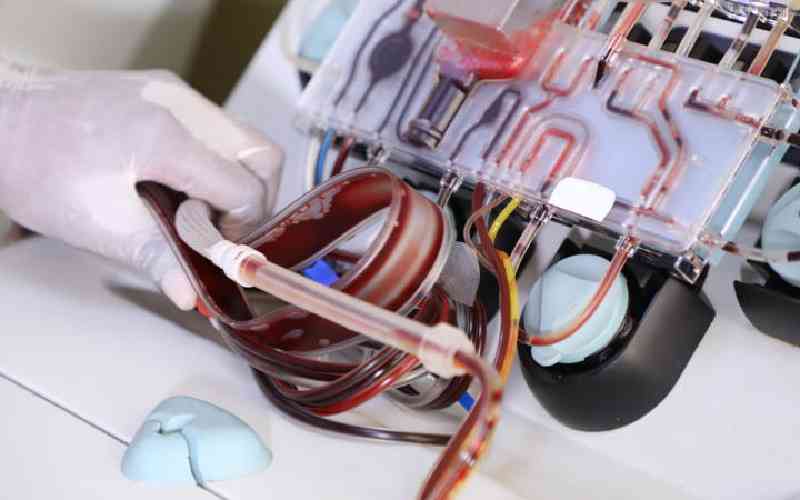An international university is among customers who borrowed from Housing Finance (HF) but have fallen back on their repayment.
Interest on the Sh1.2 billion loan to the privately-owned institution was not paid for at least 90 days, as part of a huge but grossly understated non-performing loans. It is one of loans worth Sh4.3 billion which the firm concealed, but could have huge implications on profitability and investor perception — had it been declared.
Documents filed in court by an aggrieved former senior manager, backed with the finding of a report by consultancy firm McKinsey, detail the extent of the bad loans. The story of the hidden bad loans was first reported by the Business Daily publication.
Kevin Isika, who was sacked last June supposedly for exposing the under-reporting of the toxic loans, claims senior managers worked hard to conceal possible losses that could arise from defaults.
In a note to board chairman Steve Mainda, Isika said the bank’s bad loans amounted to Sh9.3 billion, nearly double the Sh5 billion reported. “After I had tried to get appointments with Sam (Waweru) to discuss this to no avail, I was summoned by Frank Ireri on May 20, 2016, and I was told to look for another job or I would be fired and humiliated and rendered impossible to get a job and work in this industry ever again,” Isika wrote.
In his understanding, the management knew the extent of the bad loans and were ready to conceal it from the sector regulator and investors. Ireri is the managing director of Housing Finance Group while Waweru heads the lending arm, Housing Finance Company. Isika supports his claim on a finding by McKinsey which reported that 43 per cent of HF’s loans worth Sh49 billion were in arrears, as such presenting a high possibility of default. But only Sh4 billion out of the Sh21 billion that was in arrears had been classified as bad, while the rest were rated as either normal or restructured — in an attempt to present a better-than-actual picture of the bank’s assets.
Loan restructuring happens when a distressed borrower negotiates the repayment terms to buy time to keep up with the repayment schedule.
In an internal communication, Isika raised concerns that some unnamed “habitual defaulters” had been accommodated for more than two years with their loans rated as normal. Typically, he said, the loans could have been downgraded to substandard, doubtful and then loss. Such action would, however, impact on the reported profitability of the lender.
The claims place HF as the fourth bank to be rocked by allegations of toxic insider loans after Imperial Bank (which is in receivership), National Bank and Chase Bank. Isika’s explosive annexes attached to the suit also suggest that the bank hid at least Sh4.3 billion of bad loans from the market around the time it floated its 2015 rights issue.
Corporate governance guidelines place the accuracy of the financial information on directors of companies, meaning a board could be sanctioned should it be found to have actively helped distort material facts.
Isika further accuses the external auditors of helping the lender in under-reporting its bad loans. “I am writing to you from my personal e-mail since my office email and any access to the bank system has since been disabled. The bank has been reporting an NPL (non-performing loan) figure of Sh5 billion. However, the real position is as follows (sic) is that NPL is Sh9.3 billion,” he wrote to the board.
HFC, whose shares are listed at the Nairobi Securities Exchange, reported a profit of Sh1.2 billion for the nine months to September 2016.
 The Standard Group Plc is a
multi-media organization with investments in media platforms spanning newspaper
print operations, television, radio broadcasting, digital and online services. The
Standard Group is recognized as a leading multi-media house in Kenya with a key
influence in matters of national and international interest.
The Standard Group Plc is a
multi-media organization with investments in media platforms spanning newspaper
print operations, television, radio broadcasting, digital and online services. The
Standard Group is recognized as a leading multi-media house in Kenya with a key
influence in matters of national and international interest.
 The Standard Group Plc is a
multi-media organization with investments in media platforms spanning newspaper
print operations, television, radio broadcasting, digital and online services. The
Standard Group is recognized as a leading multi-media house in Kenya with a key
influence in matters of national and international interest.
The Standard Group Plc is a
multi-media organization with investments in media platforms spanning newspaper
print operations, television, radio broadcasting, digital and online services. The
Standard Group is recognized as a leading multi-media house in Kenya with a key
influence in matters of national and international interest.








